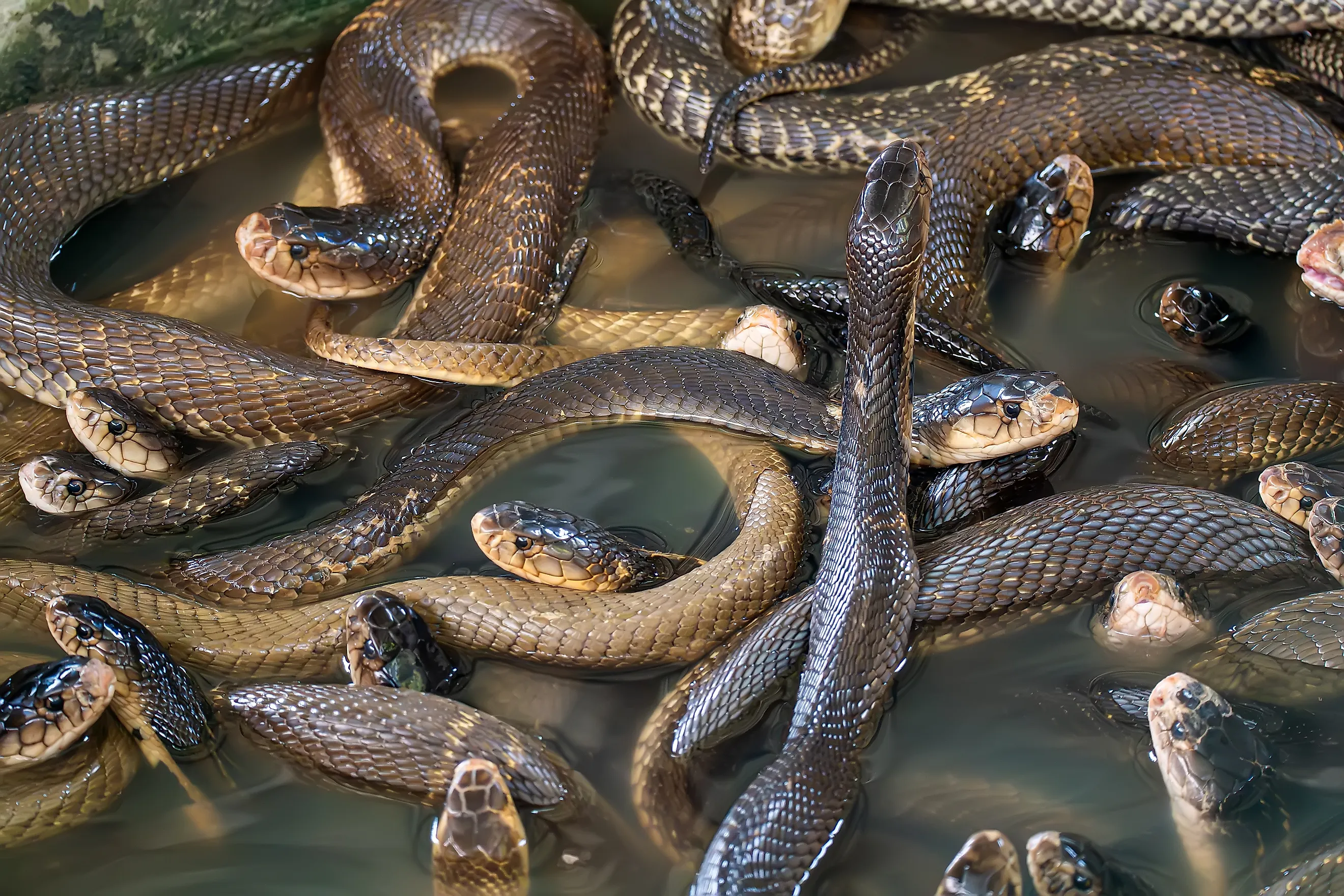
The Most Snake Infested Lakes in New Mexico
New Mexico is lauded for its diverse terrain, ranging from arid desert landscapes to rugged mountain peaks, rolling plains, river valleys, and even lakes. This southwestern State's striking natural beauty contributes a high degree of biodiversity - including the nation's deadliest predators. Among the apex predators that roam this land, the snake thrives in multiple varieties and habitats, ranging from arid landscapes to lakes - and everything in between.
New Mexico is home to 46 species of snakes, which inhabit its desert floors, grasslands, forests, and wetlands. Bodies of water offer these ancient reptiles an abundance of unique advantages, combining the best of all worlds. Venomous and non-venomous snakes are found in thriving numbers in these areas. The following list outlines the select few to pay particular attention to when planning a trip to The Land of Enchantment.
Elephant Butte Lake
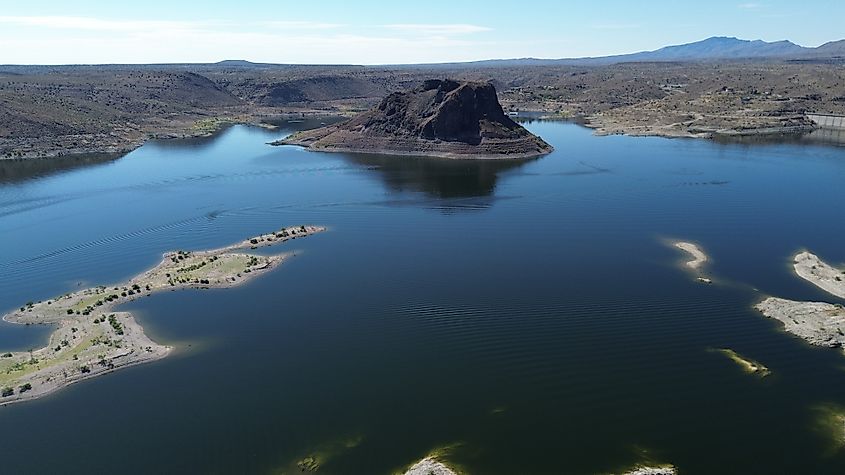
As the largest body of water in New Mexico, Elephant Butte Reservoir—also known as Elephant Butte Lake—is located in the southern part of the Rio Grande. Completed by the U.S. Bureau of Reclamation in 1916, it is also the 84th largest man-made lake in America, spanning 36,500 acres. The abundant, flowing water transports eroded sedimentation, nutrients, and bacteria, which collect around the man-made basin, mixing with the sand while enabling vegetation growth and a thriving ecosystem. The conditions are ideal for predatory and venomous varieties of rattlesnakes, where the western diamondback rattlesnake (Crotalus atrox), Mojave rattlesnake (Crotalus scutulatus), and prairie rattlesnake (Crotalus viridis). Special care must be taken around these shores, as all three pose a significant threat to humans, with the diamondback and Mojave being among the deadliest in the region.
In addition to this venomous variety, you will also find non-venomous threats such as the gopher snake (Pituophis catenifer), western ribbon snake (Thamnophis proximus), kingsnake (Lampropeltis getula), and bullsnake (Pituophis catenifer sayi). Elephant Butte Lake's favorable climate, massive area, and easy access to prey are all ideal conditions for the snake population to excel. It is estimated that there are anywhere from several hundred to thousands of snakes at any given time of the year.
Cochiti Lake
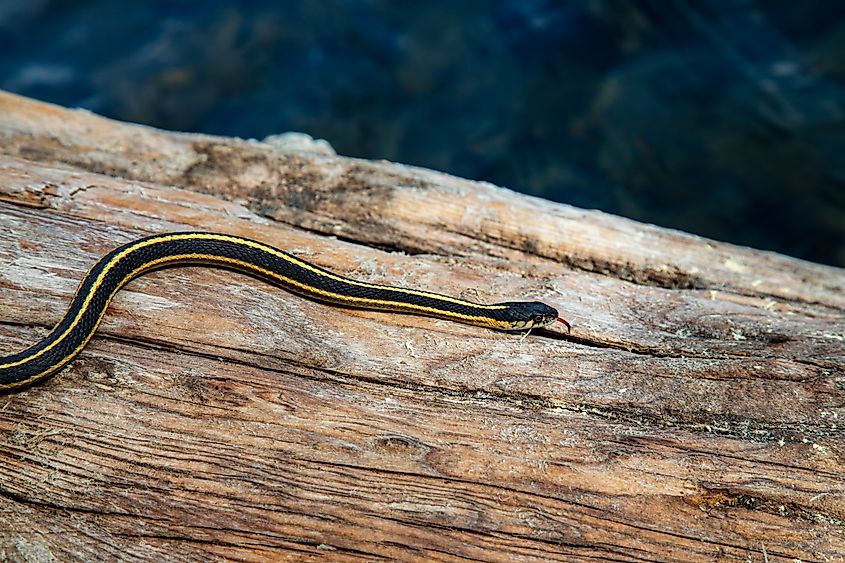
Cochiti Lake is a culturally and historically significant segment in New Mexico's north-central region, near the capital of Santa Fe and the State's most populous city, Albuquerque. Similar to Elephant Butte Lake, Cochiti Lake is connected to the Rio Grande, resting at the tail of this long, winding river. This solace offers serene, panoramic views as the Rio Grande fills it with a constant supply of fresh water—consisting of snowmelt from the Rocky Mountains.
The lake, spanning approximately 11,000 acres, attracts locals and tourists who enjoy picnicking, camping, boating, swimming, and fishing while also attracting a healthy snake population. Various vermin feed on the scattered vegetation and these herbivores also utilize the lakeside access points for hydration, leaving them highly vulnerable to predatory snakes. The western diamondback rattlesnake sports highly toxic venom, and this top predator has relatively free reign to prey on the rodents in the areas surrounding the lake.
Non-venomous threats such as the coachwhip (Masticophis flagellum), western garter snake (Thamnophis elegans), bullsnake (Pituophis catenifer), glossy snake (Arizona elegans), ring-necked snake (Diadophis punctatus), western ribbon snake (Thamnophis proximus), and checkered garter snake (Thamnophis marcianus) also roam these lands. Although bites from these snakes are not fatal, it is still highly advisable to always be on the lookout near shores and grassy areas. The coachwhip, western garter snake, and bullsnake are known to be particularly territorial and defensive if they feel threatened.
Conchas Lake
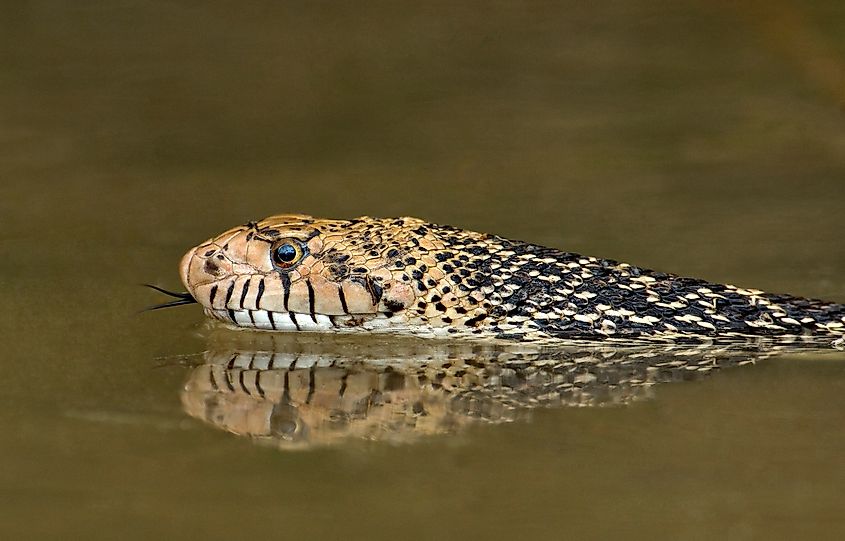
Found in northeastern New Mexico, Conchas Lake is renowned for offering scenic views, clear waters, and an abundance of fresh, open air - ideal for abundant outdoor activities. This man-made reservoir attracts anglers and hobbyists alike with largemouth bass, smallmouth bass, walleye, crappie, and catfish. The beautiful combination of lush greenscapes, semi-arid land, and desert floors contributes to a rich and diverse ecosystem. Within this 9,600-acre expanse, the complete spectrum of wildlife, such as hawks, deer, coyotes, and quail, roams. The rodent population also roams freely, with the collective dependent on the water supply and abundant vegetation.
The delicate balance of life is carefully maintained at Conchas Lake, where various snakes patrol and control the area. Large bullsnakes, coachwhips, and gopher snakes frequently hunt there, as each species is highly adaptable to different environments and skilled in aquatic habitats. Venomous types of rattlesnakes, such as the western diamondback and prairie rattlesnake, are also seen and heard around the lake. They immobilize their prey with venom injections. Visitors near the shoreline and grassy areas should stay alert to potential threats—although these snakes typically prefer to avoid humans, their predatory instincts can make them aggressive. Several hundred snakes probably roam Conchas Lake, with numbers peaking during the high rodent season.
Heron Lake
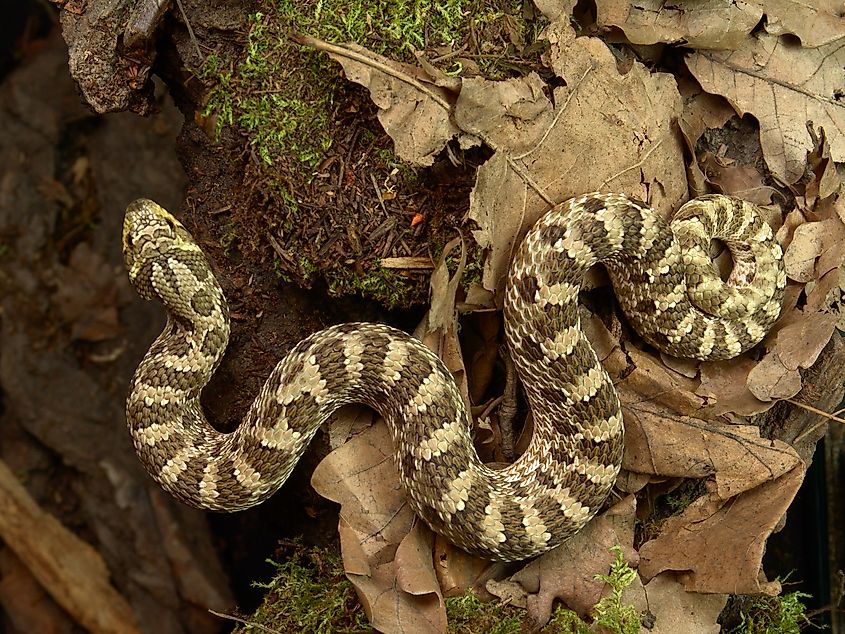
Heron Lake is in the middle of the desert, offering spectacular views of the surrounding San Juan Mountain ranges. Located near the State's northern edge, Heron Lake comprises a larger network that interconnects Colorado's San Juan River with the Rio Chima. The lake is stocked year-round with rainbow trout, kokanee salmon, and brown trout, with new hatches serving as prey for western terrestrial garter snakes (Thamnophis elegans), which hunt along the surface. Rainbow trout, brown trout, and kokanee salmon are all shoreline spawners, making them a prime target for the aquatically adept garter snake. Competition for prey -in the form of rodents like mice, rats, voles, and chipmunks - is fierce. However, the prairie rattlesnake has remained an apex predator throughout New Mexico, and Heron Lake is no exception. Extra caution must be taken along shorelines as the sinister rattle can be heard in ambush and pursuit of the next meal. This highly venomous threat, though primarily terrestrial, is known to resort to bodies of water when migrating or fleeing from a threat.
Less threatening varieties of snakes, such as the bullsnake, western hognose snake (Heterodon nasicus), striped whipsnake (Masticophis taeniatus), and smooth green snake (Opheodrys vernalis), also inhabit the areas around Heron Lake. Each of these species can swim and live near water, sometimes inside when escaping from predators. When encountering these snakes, especially the bullsnake, caution should be taken to avoid provoking them into striking. However, generally speaking, these snakes only pose a significant threat if they are threatened or provoked.
Wrapping Up
Despite being known for its dry, arid environment, New Mexico still features several wetlands, rivers, and lakes, both naturally occurring and created through human effort. This diversity supports a rich ecosystem where the delicate balance of predator and prey exists. New Mexico’s lakes host a wide variety of snake species, each thriving in different habitats. From the venomous rattlesnakes at Elephant Butte Lake to both venomous and non-venomous species at Cochiti and Conchas Lakes, these areas are rich in biodiversity. Whether exploring the peaceful shores or enjoying outdoor activities, being aware of these reptiles and respecting their habitats is crucial for a safe and meaningful experience in The Land of Enchantment.











